The post The rose infusion: an elixir of health and well-being first appeared on Blog Royal Tips.
]]>The rose, a flower with a millennial history
The rose belongs to the Rosaceae family and is considered to be one of the oldest species on the planet, with rose fossils dating back more than 35 million years. It is native to Asia and parts of Europe and North America. Due to its attractive appearance and many health benefits, today it is cultivated throughout the world for ornamental, cosmetic, nutritional, and therapeutic purposes.
In the East, they have been preparing this infusion for thousands of years. The dry buds of the Rosa rugosa variety are a natural source of vitamin C, as well as having a purifying, relaxing, and slightly laxative effect.
Within traditional Chinese medicine, this rose variety (known in China as Mei Gui Hua) is considered to be the most powerful of all the aromatic plants due to its immediate but subtle effect. It is grown mainly in the regions of Jiangsu, Sichuan, Shandong, Fujian and Zhejiang.
A rose plant can reach up to 2 metres in height, with its large branches densely covered by leaves, and its flowers growing individually or in small clusters at the end of each branch. Rose petals range in colour from pink and red to yellow and white, and they start to flower between May and June. To guarantee the best properties and perfect conservation, roses are harvested in late spring, just before they bloom. The branches are cut and the buds are then separated and dried at low temperatures, so that all the active ingredients are well preserved.
In addition to a high vitamin C content, the buds of the Rosa rugosa also contain essential oils, fatty acids, tannins and other antioxidants that give it a characteristic aroma and flavour. Precise drying methods must be used in order to preserve these elements.
Rose Infusion as a “Lady’s tea”
As well as being an enduring symbol of love throughout the world, the rose is often associated with women. Its gentle and undisputed elegance, sweet aroma and delicate beauty can fully justify this classical comparison. Nevertheless, a rose is also considered the lady’s flower due to its medicinal properties.
– In ancient times, menstrual pains were treated with rose infusions, since their essential oils relax and soothe cramps
– This flower aids the health and beauty of the skin. Its antioxidants purify the body, help to regulate the imbalances that cause acne, and improve the appearance of the skin in general.
– The diuretic effect of the infusion is favourable in cases of fluid retention, since it facilitates the elimination of excess fluid and reduces the feeling of swelling and bloating that many women suffer, particularly in the summer.
– Due to its low calorie count and purifying action, a rose tea is perfect for those who want to lose weight. In addition, its relaxing effect helps to overcome the feelings of stress and anxiety that often occur when starting a diet.
Although it has been defined as the infusion for women, rose infusions are also suitable for men. Enjoying a drink that is both delicious and rich in healthy properties is always a pleasure for the body and senses, and can improve your general mood in times of heavy stress.
How to prepare a rose infusion
During the summer, the recently harvested and dried rosebuds are the principle ingredient of delicious infusions. This thousand-year-old Eastern tradition isn’t so common in our country, even though the rose’s health and beauty benefits are well-known.
Preparing a rose infusion is easy and it can be consumed cold or hot, depending on your preferences. Use 2-3g of Rosa rugosa buds per cup, and add 200ml of freshly boiled water. Cover and leave the infusion for 5 minutes, before straining it and then savouring the delicious taste. If you prefer, you can sweeten it with honey, though we advise tasting the pure infusion first to enjoy all of its nuances.
The rose infusion is customarily drunk after a meal or at the end of the day. This means that it aids digestion, reinforces the immune system and relaxes the body, all while providing a unique and intense aroma that helps us to enjoy the moment to the fullest.
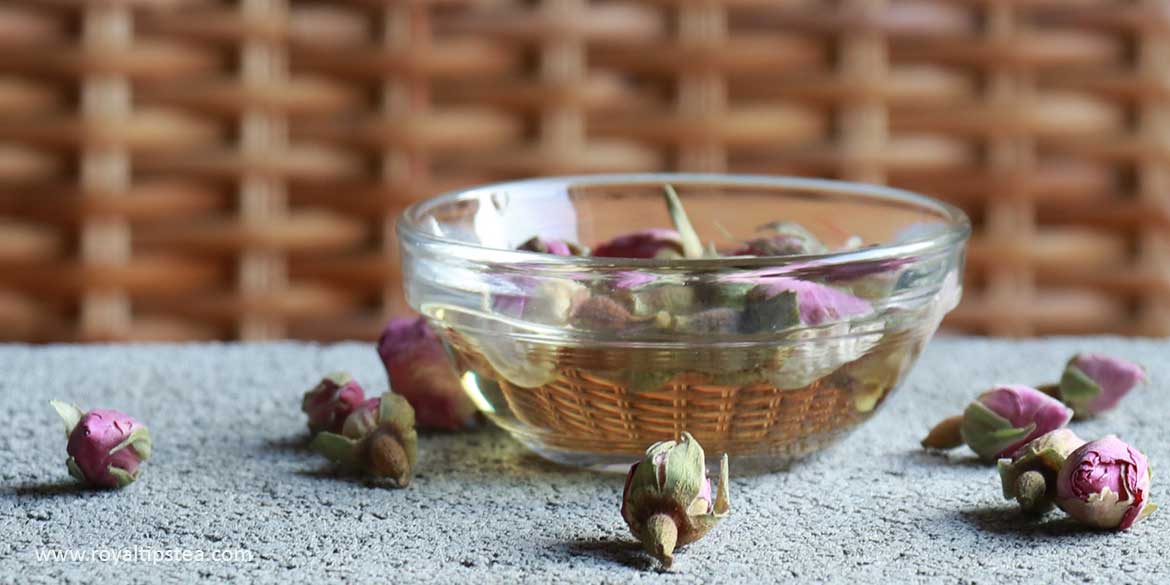
The post The rose infusion: an elixir of health and well-being first appeared on Blog Royal Tips.
]]>The post Why are Yixing teapots good to make tea? first appeared on Blog Royal Tips.
]]>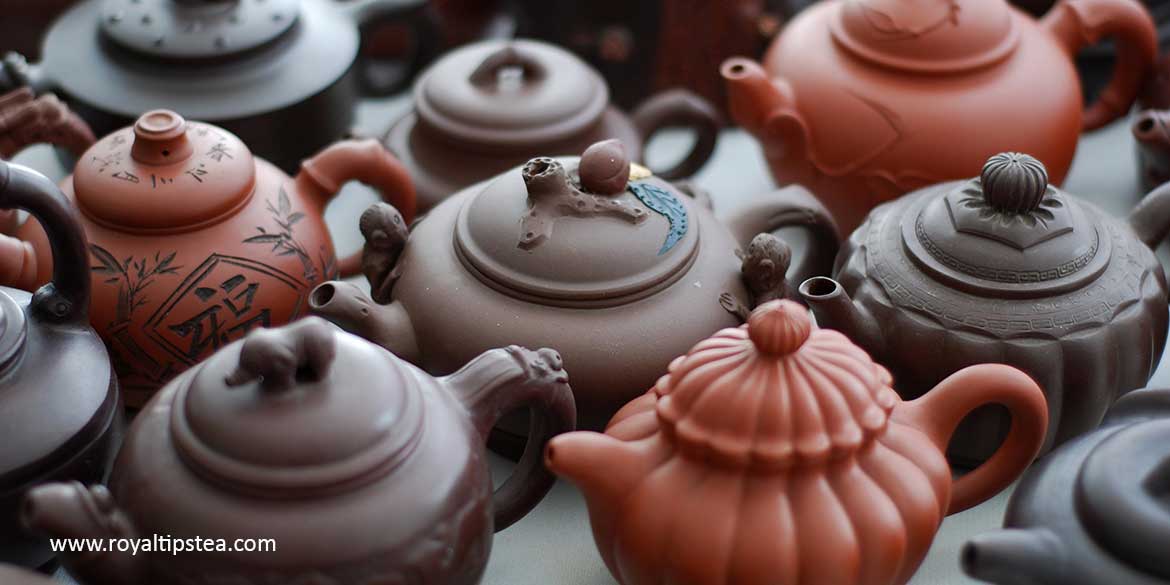
The quality of Yixing Zisha clay teapots
Unglazed earthenware Yixing teapots date back to the days of the Song Dynasty (960-1279 AD) and reached the height of their fame during the time of the Ming Emperors (1368–1644 AD). They are made in the town of Yixing (China), which lies close to Lake Tai in Jiangsu province, and the ‘zisha’ (purple) clay from the local hills has a special character and quality.
The colour of the zisha clay ranges from yellow and yellow-brown through red, red-brown, brown, purple-brown, green and black, and the mineral ingredients make it the best material for brewing loose leaf tea. Iron oxide gives the pots strength and an ability to maintain a stable temperature during brewing; other minerals – kaolinite, quartz, mica, hematite, and isinglass – make the teapot very porous and the tiny holes left in the pot after firing allow it to “breathe” during brewing and allow it to adapt to temperature changes during the brewing process. These characteristics help to draw out all the rich, complex layers of flavours from the tea.
What types of tea are brewed best in a Yixing pot?
Yixing teapot is never glazed for it is important that it remains porous. Yixing clay can be used for any type of tea but are particularly good for brewing Pu-erh teas and oolongs. Each zisha teapot should only be used for one particular type of tea (dark oolongs, cooked puerh, raw puerh, etc.) because the clay absorbs the tea oils as the leaves infuse. Each time the pot is used, extra layers of flavour are then added back into the water during brewing and give a smoothness and depth to the flavour of the tea. Some people prefer to use one individual pot not just for one category of teas but for just one individual tea – such as Mi Lan Dan Cong from Phoenix Mountains in China’s Guandong province, or Yan Cha rock oolong from the Wuyi Mountains.
Zisha teapot, a precios piece of Chinese art
Yixing teapots are always small and vary in size from a capacity of 70 ml to 225 ml. They can be very plain or are often made in the shape of other things – pumpkins, dragons, bundles of bamboo, turtles, a Buddhist priest, or a water lily pad topped with a little frog that forms the lid. And sometimes different clays are mixed to create a marbled effect. The teapots of high quality are made by hand, and skilled artists work the raw clay, craft and shape it by hand, cut the required pieces from slabs of the prepared clay, and mould them together to make the body. They then add the spout, the handle, the lid and any decorations on the surface.
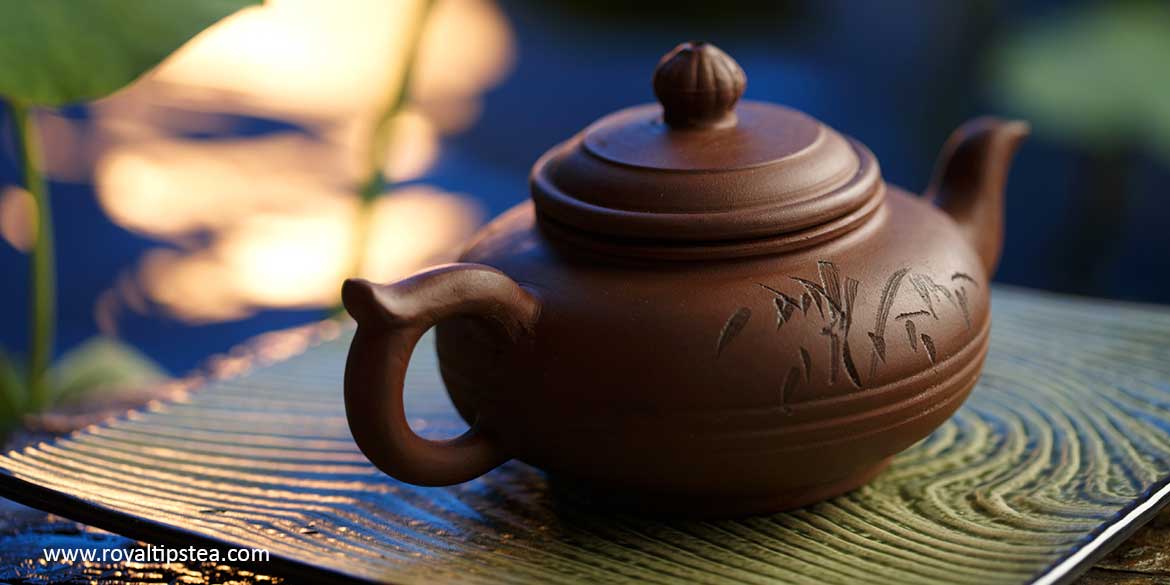
How to season a Yixing Teapot
When choosing a pot, think about the size you need for serving tea to, for example just one or two people, or to five or six people. Chose a shape and colour that pleases you and sits well with your other tea wares. Before using your pot to brew for the first time, you will need to season it.
1.Place the pot and lid in a large bowl or pan of cold water.
2. When it has soaked for a while, rub gently with a sponge of cloth that has no soap on it.
3. Using a mild, non-abrasive toothpaste and a toothbrush, scrub the pot all over to clean the surface thoroughly.
4. Rinse the pot in clean water.
5. Place the teapot and lid in a saucepan of clean cold water and place on the stove.
6. Bring the water to the boil and allow the pot and lid to remain in the gently simmering water for 10 0-15 minutes.
7. Carefully lift the teapot out of the water, drain and allow to cool. Do not plunge into cold water but allow to drain and cool naturally.
8. Pour some cold water into a pan and add a generous spoonful of dry leaves of the type of tea you plan to brew in the new pot. Bring the water and tea leaves to a gentle boil and carefully immerse the pot into the pan of tea. Switch off the heat, cover the pan and allow the pot to soak in the hot tea for at least 30 minutes or overnight.
9. Remove the pot from the pan, drain and allow to dry.
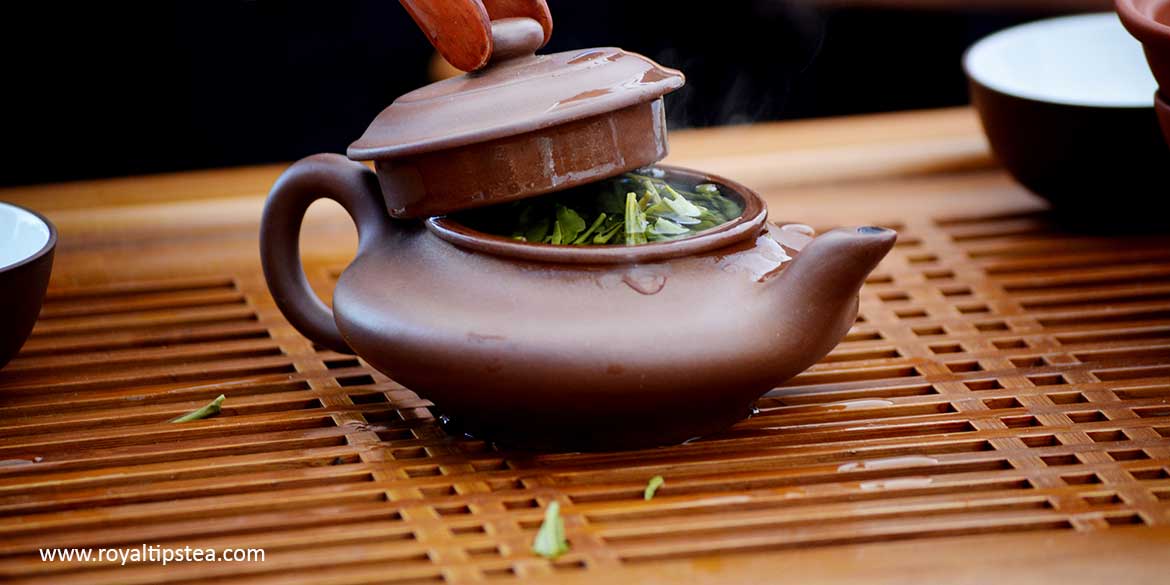
The post Why are Yixing teapots good to make tea? first appeared on Blog Royal Tips.
]]>The post How to Make Cold Brew Tea first appeared on Blog Royal Tips.
]]>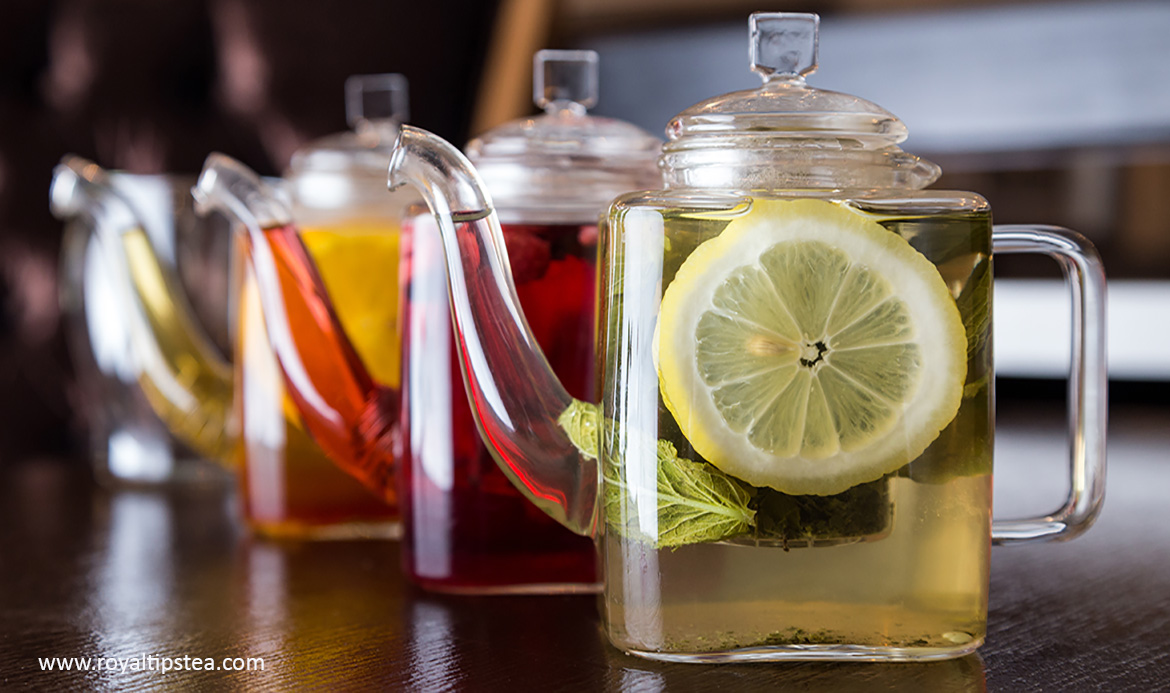
We are all so used to brewing tea with hot water that the idea of steeping the leaves in cold water raises questions not asked before. Why brew tea in cold water? How to cold brew tea? How long does it take? Does it make a difference to the taste? Does the brew contain more or less caffeine, etc?
Why brew tea in cold water?
By steeping the tea leaves in cold rather than hot water, a different balance of tea’s ingredients is infused into the water. The cold-brewed liquor contains fewer polyphenols (which have a bitter taste) and less caffeine (which also has a bitter taste) and so the tea is sweeter and smoother. And the liquor is often brighter and more crystal clear. The cold brew method works really well for teas – such as sencha, gyokuro, and Darjeeling First Flush – which are notoriously difficult to brew in hot water without bringing out too much bitterness and astringency.
How to brew tea in cold water?
Use about 1.5 times the quantity of tea you would normally measure into your teapot. If cold-brewing your tea in the refrigerator, choose a jug that will easily fit inside, measure in the tea and the water, cover and steep for between 4 and 10 hours. The longer the tea steeps, the more flavour and the more caffeine will be drawn into the water. Green and white teas brew the fastest. Balled oolongs, large leaf black teas and dark teas take the longest. If you’re brewing Pu-erh, other dark teas or herbals (which can be a little dusty), it’s best to rinse them first in hot water before adding to the cold water. To make a really cold brew, add ice cubes and steep for longer. When the brew is ready, strain and serve.
For cold-steeped tea on-the-go, choose one of the handy, screw-top, carry-around tea-brewing bottles that are now so readily available from lots of tea companies. Measure the tea into the infuser, add cold filtered water, shake, leave for 15-30 minutes, remove the infuser and enjoy your cold-brew tea wherever you are. For a second or third brew (depending on the type of tea), replace the infuser and add more cold filtered water.
How long does it take?
It really depends on the type of tea you are cold steeping and how much taste and aroma you want from the tea. Experiment to see what works for you and what you like best. Steep a tea for 2 hours to and then taste it to see if it has enough flavour for your preference. If not, steep for another hour and taste again. Experiment with different teas, different quantities of leaf, and different steeping times, and see how the aroma, strength, sweetness, astringency, and mouthfeel vary.
Tea Cocktails
If you fancy yourself as a cocktail mixologist, don’t forget that you can also cold steep tea – or just briefly shake the leaves – in different alcoholic beverages to add an unusual twist to your favourite mix. Try cold steeping Earl Grey, China Keemun or a roasty dark oolong in white port or vodka; or a small quantity of gyokuro or Chinese green tea in gin or white rum; or a rich black tea (a second flush Assam or a low grown Ceylon) in brandy. Drink the tea-flavoured beverages neat or add to your own creative cocktails with other spirits or wines, and soda, tonic, lemonade or other mixers.
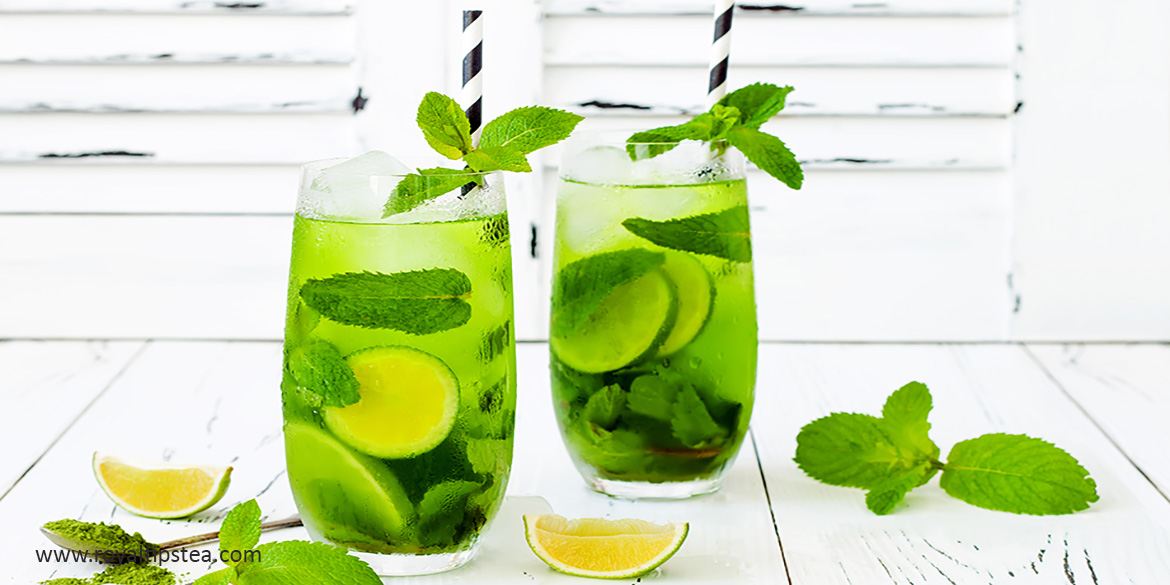
The post How to Make Cold Brew Tea first appeared on Blog Royal Tips.
]]>